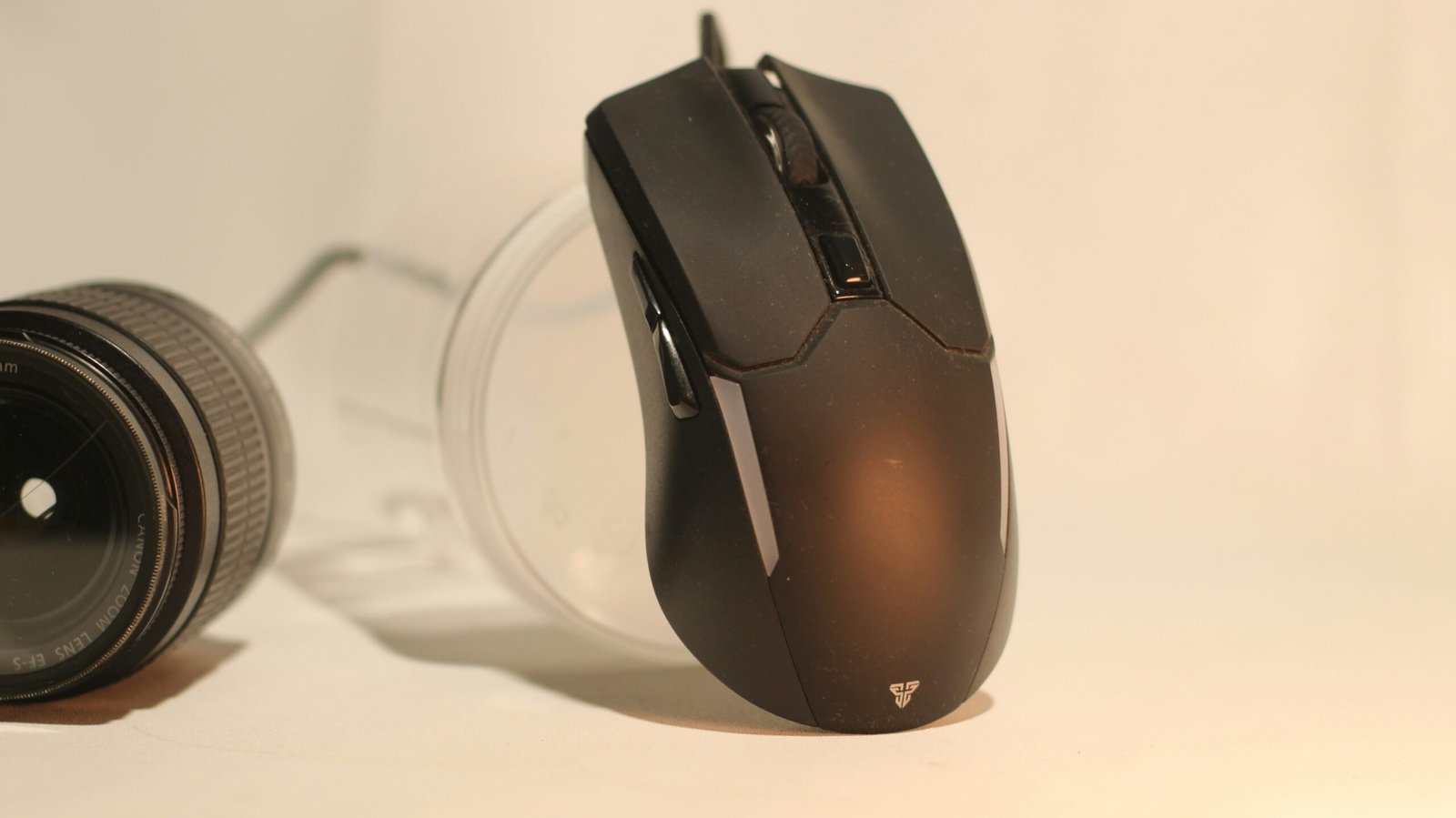The use of an optical mouse has become increasingly prevalent in recent years due to its many advantages over traditional mechanical mice. One of the key benefits of an optical mouse is its ability to provide precise tracking. The digital camera in the mouse captures thousands of images per second, allowing for accurate detection of even the slightest movement. This makes it ideal for tasks that require fine control, such as graphic design or gaming.
Furthermore, the lack of moving parts in an optical mouse makes it more durable and reliable compared to mechanical mice. With no rolling ball to get dirty or sensors to get clogged, an optical mouse can maintain its performance over time without the need for frequent cleaning or maintenance. This not only saves time and effort for the user but also ensures a consistent and smooth tracking experience.
Another advantage of an optical mouse is its versatility in terms of the surfaces it can be used on. Unlike mechanical mice that require a mouse pad or a smooth surface, an optical mouse can track on a variety of surfaces, including glass and uneven surfaces. This flexibility allows users to work or play wherever they please, without the need for additional accessories or limitations.
In addition to these practical benefits, optical mice also offer aesthetic advantages. They are available in a wide range of designs and colors, allowing users to choose a mouse that matches their personal style or complements their workspace. This not only adds a touch of personalization but also enhances the overall visual appeal of the computer setup.
Overall, the optical mouse has revolutionized the way we interact with computers, providing precise tracking, durability, versatility, and aesthetic appeal. Whether for work or leisure, an optical mouse is a reliable and efficient tool that enhances the user experience and improves productivity.
Advantages of Using an Optical Mouse
There are several advantages to using an optical mouse:
- Precision: Optical mice offer high precision tracking, allowing for accurate and smooth cursor movement. This makes tasks such as graphic design, photo editing, and gaming much easier. With an optical mouse, you can precisely select and manipulate objects on your screen, ensuring that your work is precise and error-free.
- No Moving Parts: Unlike mechanical mice, optical mice do not have any moving parts, such as the rolling ball, that can get dirty or wear out over time. This makes optical mice more durable and less prone to mechanical failures. You don’t have to worry about the ball getting stuck or the mouse becoming unresponsive due to accumulated dust or debris. This reliability ensures that your mouse will continue to function smoothly for a long time.
- Smooth Movement: Optical mice provide smooth and consistent tracking on various surfaces, including mouse pads, desks, and even fabric. This eliminates the need for a mouse pad and ensures that the mouse can be used on almost any surface. Whether you’re working at your desk, on the couch, or even on the go, an optical mouse will provide you with a seamless and uninterrupted user experience.
- Ease of Use: Optical mice are generally plug-and-play devices, meaning they can be connected to a computer without the need for additional software or drivers. This makes them easy to set up and use. Simply plug in the USB receiver or connect via Bluetooth, and you’re ready to go. This simplicity and convenience make optical mice suitable for both tech-savvy individuals and those who are less familiar with technology.
- Improved Battery Life: Many wireless optical mice use advanced power-saving technologies, such as sleep mode, to conserve battery life. This allows users to use the mouse for extended periods without having to replace or recharge the batteries frequently. With an optical mouse, you can enjoy long-lasting battery performance, reducing the hassle of constantly changing batteries or being tethered to a charging cable.
Overall, the advantages of using an optical mouse make it a reliable and efficient tool for various tasks. Whether you’re a professional designer, a casual computer user, or a passionate gamer, an optical mouse can enhance your productivity and provide you with a seamless and enjoyable user experience.
Difference Between an Optical Mouse and a Normal Mouse
The main difference between an optical mouse and a normal mouse, also known as a mechanical mouse, lies in the technology used to track movement.
A normal mouse, or mechanical mouse, uses a rolling ball and internal sensors to detect movement. As the user moves the mouse, the rolling ball rotates, and the sensors detect the rotation, translating it into cursor movement on the screen. However, the rolling ball can get dirty or worn out over time, leading to inaccurate tracking or cursor jitters.
On the other hand, an optical mouse uses an LED or laser to track movement. The light emitted by the LED or laser is reflected back into the mouse, and the camera captures images of the surface. These images are then analyzed by the mouse’s processor to determine the mouse’s movement. This technology provides more precise and consistent tracking, without the need for a rolling ball.
One advantage of an optical mouse is its ability to work on a variety of surfaces. Since it uses a camera to capture images of the surface, it is not reliant on the texture or color of the surface like a mechanical mouse. This means that an optical mouse can be used on smooth surfaces, rough surfaces, or even transparent surfaces, making it more versatile in different environments.
Additionally, the lack of a rolling ball in an optical mouse means that there are no moving parts that can wear out or collect dirt. This results in a longer lifespan for the mouse, as well as more consistent and accurate tracking over time. Users of optical mice often find that they require less maintenance and cleaning compared to mechanical mice.
Furthermore, optical mice generally have higher sensitivity and precision compared to mechanical mice. The use of an LED or laser allows for higher resolution tracking, which means that even small movements of the mouse can be accurately detected and translated into cursor movement. This can be particularly beneficial for tasks that require fine control, such as graphic design or gaming.
In terms of ergonomics, optical mice also offer more design options. Since there is no need to accommodate a rolling ball, optical mice can be made in a variety of shapes and sizes to suit different hand sizes and grip styles. This allows users to find a mouse that is comfortable for them to use for extended periods of time.
Disadvantages of Using an Optical Mouse
While optical mice offer numerous advantages, there are also a few disadvantages to consider:
- Surface Dependency: Optical mice rely on a clear and textured surface to track movement accurately. They may not work well on reflective or transparent surfaces, such as glass or mirrors. In such cases, a mouse pad or a specialized mouse surface may be required for optimal performance.
- Cost: Optical mice tend to be slightly more expensive than mechanical mice. However, the price difference has become less significant over the years as optical technology has become more widespread.
- Power Consumption: Wireless optical mice require batteries to operate, and they consume power even when not in use. While power-saving features are built-in to extend battery life, users still need to replace or recharge the batteries periodically.
- Ergonomics: Another disadvantage of optical mice is that they may not be as comfortable to use for extended periods of time. The design of the mouse, including its shape, size, and button placement, can greatly impact the user’s comfort and overall experience. Some optical mice may not fit well in certain hand sizes or may cause discomfort due to their shape or weight.
- Compatibility: Although optical mice are compatible with most modern computers, there may be some compatibility issues with older systems or operating systems that do not support the necessary drivers. In such cases, users may need to install additional software or use a different mouse altogether.
- Sensitivity: While optical mice are generally more accurate than mechanical mice, they can sometimes be too sensitive for certain tasks. This can make it challenging to perform precise movements, such as selecting small icons or editing intricate details in graphic design software. Adjustable sensitivity settings can help mitigate this issue, but it may still be a drawback for users who require extremely precise control.
Furthermore, the optical mouse has revolutionized the way we interact with computers. With its advanced technology, it has eliminated the need for a mouse pad, making it more convenient for users. The optical mouse can be used on any surface, whether it is a desk, a table, or even your leg. This flexibility has made it an essential tool for both office and home use.
Moreover, the optical mouse has also improved the overall user experience. With its precise tracking capabilities, it allows for smoother and more accurate cursor movement on the screen. This is particularly important for tasks that require precision, such as graphic design or gaming. The optical mouse’s ability to track movement with high accuracy ensures that users can navigate through menus, click on small icons, and perform intricate movements with ease.
Another advantage of the optical mouse is its durability. Unlike mechanical mice, which often suffer from issues such as the rolling ball getting stuck or the internal sensors becoming dirty, the optical mouse is less prone to such problems. Its design eliminates the need for moving parts, making it more reliable and long-lasting. This means that users can enjoy a seamless and uninterrupted experience, without having to worry about the mouse malfunctioning.
Additionally, the optical mouse is compatible with different operating systems, making it a versatile choice for users. Whether you are using Windows, macOS, or Linux, you can easily connect and use an optical mouse without any compatibility issues. This universality has made it a popular choice for businesses and individuals alike, as it eliminates the need for purchasing different mice for different computers.
Why Doesn’t an Optical Mouse Work on Glass?
An optical mouse does not work well, or sometimes not at all, on glass surfaces due to the way it tracks movement.
When an optical mouse is moved on a surface, such as a desk or a mouse pad, the LED or laser emits light onto the surface, and the camera captures images of the surface. These images are then analyzed to determine the mouse’s movement.
However, glass is a highly reflective and transparent material. When the light from the LED or laser hits the glass surface, a significant portion of it is reflected away, preventing the camera from capturing clear images. This lack of clear images makes it difficult for the mouse’s processor to accurately calculate the mouse’s movement.
Additionally, glass surfaces are usually very smooth, which can further impede the optical mouse’s ability to track movement. The lack of texture on the surface makes it challenging for the mouse to detect changes in position accurately.
To overcome this limitation, users can use a mouse pad or a specialized mouse surface that provides a textured and non-reflective surface for the optical mouse to track movement effectively.
Mouse pads are specifically designed to enhance the performance of optical mice. They are made with materials that offer the right amount of friction to allow the mouse sensor to track movement accurately. The surface of a mouse pad is usually textured, providing the necessary feedback for the mouse to detect changes in position. This texture helps the mouse to grip the surface and prevent it from slipping or sliding during use.
In addition to mouse pads, there are also specialized mouse surfaces available in the market. These surfaces are designed to optimize the performance of optical mice, especially on challenging surfaces like glass. They often feature a non-reflective coating that minimizes the amount of light reflected away, allowing the camera to capture clearer images. Some specialized mouse surfaces also have a micro-textured finish that provides enhanced tracking capabilities, ensuring precise and accurate movement detection.
While it may be tempting to use an optical mouse directly on a glass surface due to its sleek and modern look, it is important to understand the limitations of the technology. By using a mouse pad or a specialized mouse surface, users can ensure optimal performance and accuracy of their optical mice, regardless of the surface they are using.



